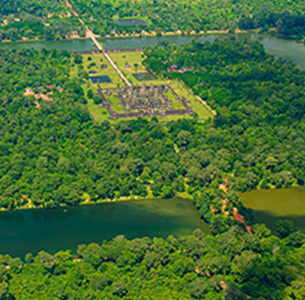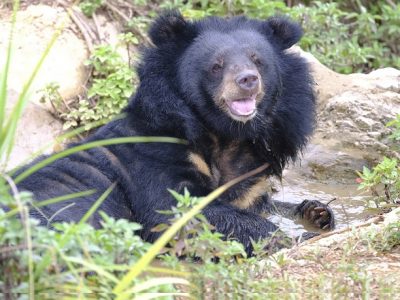Earlier this year, a project to reintroduce wildlife to the Angkor Archaeological Park celebrated eight years of success. Led by the Apsara National Authority who manage the Park, together with the Forestry Administration, and NGO Wildlife Alliance, the project was initiated in 2013 with the pioneering release of a pair of Pileated Gibbons. Since then, around 40 animals have been released, including Silvered Langurs, Palm Civets, Red Muntjacs and even a family of Smooth-coated Otters.
Last year marked another milestone for the project, with the release of the first wildcats and bird species. A pair of Oriental Pied Hornbills now fly through Angkor’s forests, with more hornbill releases planned soon. In December 2020, a pair of leopard cats were also released. The cats have not returned for supplementary food since – a good indication that their wild instincts are serving them well.
All of the animals released within the Angkor landscape have a second chance at life in the wild: they were rescued from the illegal wildlife trade or born in captivity to rescued parents. After rehabilitation at Phnom Tamao Wildlife Rescue Centre, the majority of rescued animals are subsequently released into well-protected habitat, such as the Angkor landscape. After release, the animals are carefully monitored to ensure their continued presence and wellbeing.
The megalithic Angkor Wat temple complex covers an area of 400 sq/km and contains the magnificent remains of the Khmer Empire dating from 9th to 15th century. Returning tourists can now add the possibility of seeing some unique wildlife to the already stunning Angkor experience.
For more inspiration for your next trip to Angkor, explore the endless opportunities for discovery with our interactive ebook.














